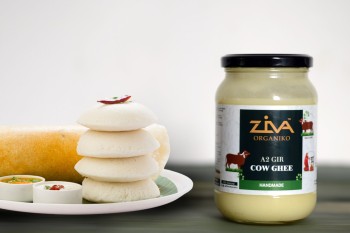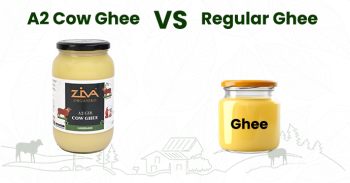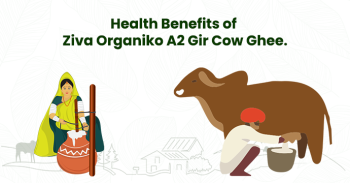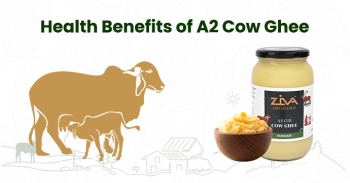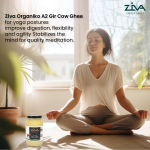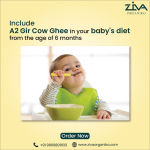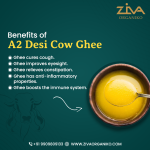Understanding the Traditional Bilona Method’s Role in Crafting Premium A2 Cow Ghee
For centuries,
A2 ghee, a clarified butter revered for its rich flavour and health benefits,
has held a special place in Indian cuisine. But what truly sets premium A2 ghee
apart is the meticulous method used in its creation: the Bilona method. This
traditional process, passed down through generations, is not just about clarification;
it's an art form that unlocks the full potential of A2 milk, yielding a
superior ghee experience.
The Essence of A2 Milk
A2 milk comes
from cows that naturally produce only the A2 type of beta-casein protein. Some
individuals find A2 milk easier to digest compared to regular cow's milk, which
contains both A1 and A2 beta-casein. This perceived digestibility is a key
reason behind the growing popularity of A2 ghee.
The Bilona Method: A
Step-by-Step Journey
The Bilona
method is a labour of love, prioritizing slow churning and natural processes
over shortcuts. Here's a glimpse into this time-tested journey:
1. Curd Formation: A2 milk is first curdled using natural cultures, like yogurt.
This allows the milk solids to separate from the liquid whey.
2. Slow Churning: The curd is then gently churned by hand or using a traditional
wooden churner. This slow churning preserves the delicate milk fats and avoids
denaturation, a process that can affect the quality and taste of the final
product.
3. Butter Formation: With persistent churning, the fat particles clump together,
forming makhan (butter). This step is crucial, as Bilona ghee is made solely
from butter derived from A2 curd, not cream.
4. Heating and Clarification: The makhan is then heated gently over a low flame.
Unlike commercial methods that employ high heat, the Bilona method relies on
slow heating to allow the water content to evaporate naturally. This low-heat
approach prevents scorching and ensures the ghee retains its distinctive aroma
and flavour.
5. Separation and Resting: As the water evaporates, milk solids settle at the bottom of
the pan, separating from the clarified butterfat. This clarified butterfat is
the essence of Bilona ghee.
6. Storage: After cooling, the Bilona ghee is stored in airtight
containers, preserving its freshness and unique qualities.
Beyond
Clarification: The Bilona Advantage
The Bilona
method goes beyond simply separating fat from milk solids. Here's how it
elevates the quality of A2 ghee:
·
Superior Taste
and Aroma: The slow and gentle heating
process preserves the natural flavours and aroma of A2 milk, resulting in a
richer, nuttier taste compared to commercially produced ghee.
·
Enhanced
Nutritional Value: Bilona ghee is
believed to retain more essential vitamins and antioxidants due to the low-heat
processing, making it a potentially more nutritious option.
·
Improved
Digestibility: A2 ghee
produced using the Bilona method is thought to be easier to digest for those
with sensitivities to A1 beta-casein.
·
Artisanal
Craft: The Bilona method
represents a dedication to traditional practices and a commitment to quality
over quantity.
In conclusion,
understanding the Bilona method is key to appreciating the unique qualities of
premium A2 ghee. It's a testament to the power of tradition and its ability to
create a culinary product that is both delicious and potentially beneficial for
health. So, the next time you reach for a jar of A2 ghee, consider the Bilona
method behind it – a process that transforms A2 milk into a golden treasure.


